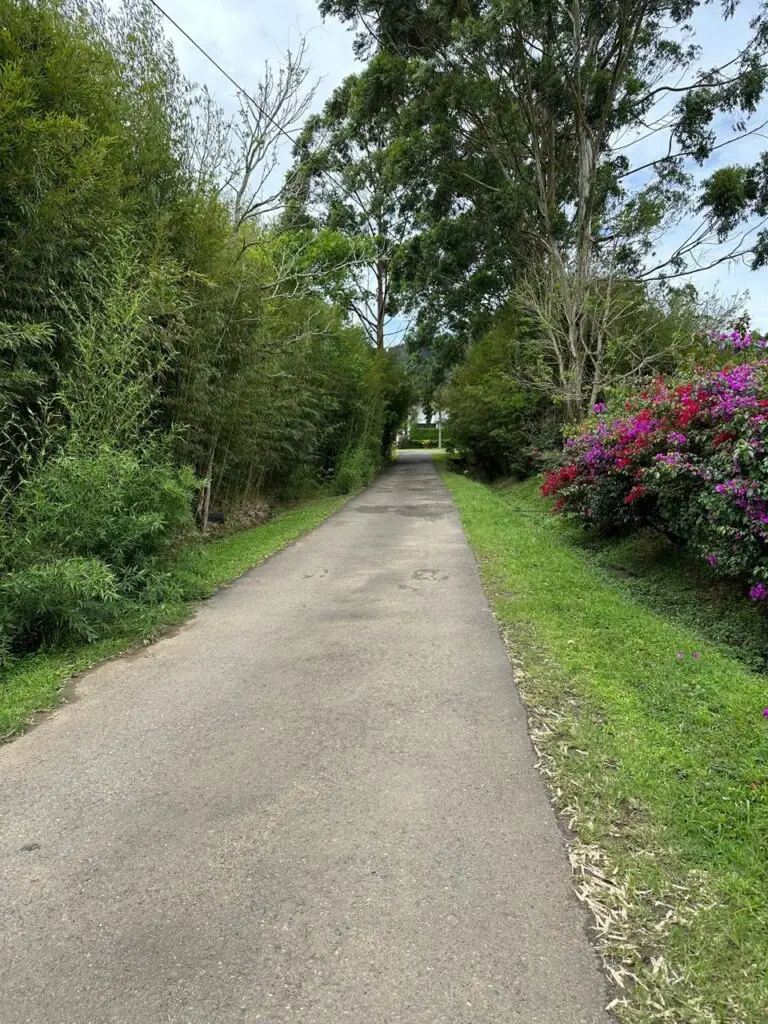Easements in Costa Rica
Easements in Costa Rica (servidumbres) are one of the most important aspects of property law. They define how one property may legally benefit from another — for example, through a shared driveway, a utility route, or a right of way (servidumbre de paso). Understanding how an easement works is essential before buying or developing land in Costa Rica.
Legal Foundation of Easements in Costa Rica
Under Costa Rican civil law, an easement is a real right over another’s property. It grants a permanent or temporary benefit to a neighboring parcel known as the dominant estate, while limiting the rights of the servient estate.
The Civil Code, in articles 370 to 382, classifies servidumbres as immovable rights by law, meaning they remain attached to the land even when ownership changes. Once an easement is registered, it is binding on all future owners.

Types of Easements (Servidumbres)
Costa Rican law recognizes several types of servidumbre, depending on their purpose and origin:
Access easements (servidumbres de paso): allow movement across another property to reach a public road.
Utility easements: for power lines, water, drainage, or sewage.
Light and view easements: regulate windows or balconies facing a neighbor’s land.
Voluntary easements: created by mutual agreement and registered in the Public Registry.
Legal or forced easements: imposed by law or by court order when a property is landlocked.
Each easement in Costa Rica must have a clear purpose, a legal origin, and be recorded to be enforceable.
Servidumbres de Paso - Rights of Way
A servidumbre de paso, or access easement, is the most common in Costa Rican real estate. It applies when a parcel has no direct exit to a public road (predio enclavado). In that case, the landowner can legally demand passage through neighboring land, compensating the affected owner for the land used and any resulting damage.
This right ensures that every property in Costa Rica has functional access, even in rural or coastal areas where subdivision patterns often leave interior lots without direct entry points.
Establishing an Easement in Costa Rica
An easement can arise in three main ways:
By agreement between owners, through a notarial deed and registration in the Public Registry.
By court decision, in the case of a forced or legal easement (servidumbre forzosa).
By apparent and continuous use, when long-term visible use exists (such as a water canal), subject to legal recognition.
Before granting or accepting a servidumbre, it is essential to verify that the affected areas match the registered plan and that the easement complies with municipal and cadastral rules.
Duties and Limitations
The servient owner may not alter or obstruct the easement. However, they can request relocation if the new path offers equal convenience to the dominant property.
The dominant owner must use the easement according to its purpose and bear maintenance costs, unless otherwise agreed. In Costa Rican practice, easements are indivisible, inseparable, and perpetual — they cannot be detached or divided from the land.
Light, View, and Construction Easements
Costa Rican law also regulates servitudes of light and view (servidumbres de luces y vistas). Property owners may not open windows or balconies overlooking a neighbor’s home or patio unless a three-meter distance is observed.
These restrictions protect privacy, safety, and the architectural integrity of urban areas. They are considered legal servitudes, meaning they arise directly from the law rather than from contract.
Registration and Public Record
Every easement in Costa Rica must be registered in the National Registry (Registro Nacional) under both properties: the dominant and the servient. Article 461 of the Civil Code requires this dual inscription to give the right legal effect against third parties.
Without registration, an easement cannot be enforced against a subsequent buyer. Therefore, due diligence should always include reviewing the registry sheet (folio real) and the cadastral plan (plano catastrado).
Extinction of Easements
Easements may end when:
Ownership of both properties merges in one person (confusión).
The purpose disappears (for example, new public access replaces a private path).
The right is expressly renounced by the beneficiary.
The easement is unused for ten consecutive years.
When the reason for an easement ceases, it can be formally canceled through a notarial act or a judicial declaration.
Why Legal Guidance Matters
Interpreting or enforcing servitudes in Costa Rica often involves technical registry and boundary analysis. Many disputes arise from unrecorded access easements or ambiguous notarial deeds.
At CPG Legal, we assist clients in drafting, registering, and interpreting easements and other property restrictions. Our bilingual attorneys ensure compliance with the Civil Code, zoning regulations, and cadastral norms.
If you need to create, cancel, or verify an easement in Costa Rica, our firm can help. We offer complete notarial and legal assistance for servidumbres de paso, boundary disputes, and registration issues. Contact CPG Legal today for reliable real estate guidance anywhere in Costa Rica.
Dr. Christopher Pirie Gil.